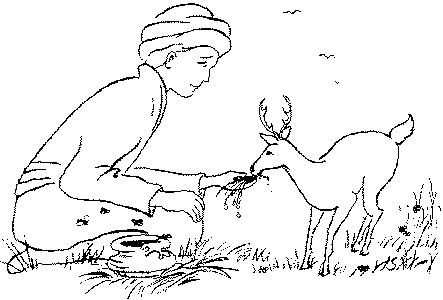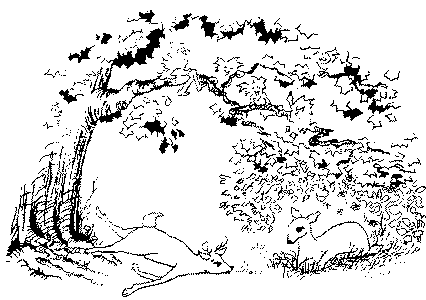Journey to find the True Original Buddha Dharma
(Part Three Dharma That Every Buddhist Must Follow)
The second book I read was called Dharma That Every Buddhist Must Follow. From the title I knew this must be a very important book for all Buddhists. In the preface, the author herself, Among Nopu Pamu said: “Dharma That Every Buddhist Must Follow is very deep Buddha Dharma which must be relied upon and applied by teachers and disciples. Because of such conditions, if one dose not rely upon, dose not study, and dose not practice Dharma That Every Buddhist Must Follow, then no matter what Dharma one practices, one cannot attain liberation from the cycle of birth and death. …. Dharma That Every Buddhist Must Follow is the mother of the mother of all Dharmas.”

The book is a collection of discourses that Pamu gave to an assembledge of Buddhist masters of highest rank, over a period of a few days under a very special karmic condition. It lays out the path to enlightenment by pinpointing the many mistakes practitioners of Buddhism can and do make in their actions or non-actions of “body, speech and mind”. To me this book was a truly indispensable guide in my daily practice. As a beginner Buddhist, I did not have a master yet, and sometimes I felt lost and tangled by the different teachings. All my Buddhism knowledge was from books and tapes, and I knew they couldn’t be completely right, since the authors were not a Buddha or Great Buddhisattva. Plus when I put them into my daily practice, I also added my own interpretations and understandings. I didn’t know whether my conducts conformed to the right Buddhism rules and procedures.
In the book, Puma illustrates “The ten superficialities of practitioners”.
1. The superficiality of Reciting Passages without Belief.
2. The superficiality of Speaking about benefiting others when one dose not have great compassion.
3. The superficiality of Donating the one is miserly.
4. For those who practice vajrayana Bddhism, The superficiality of Practicing while not abiding by the Samaya Precepts.
5. For Buddhist monks and nuns, The superficiality of Practicing while not abiding by the Precepts.
6. For laypersons, The superficiality of Practicing yet not diligently cultivating oneself.
7. The superficiality of only studying Principles but not practicing the Dharma.
8. The superficiality of Practicing the Dharma without knowing the Essentials of the Dharma.
9. The superficiality of Teaching people while not acting in accordance with the Dharma.
10. The superficiality of Instructing others when one’s own actions do not match one’s words.
Among the The ten superficialities of practitioners, Number 6: “For laypersons, the superficiality of practicing yet not diligently cultivating oneself“ was truly a wake-up call for me. I was in exactly same situation as written in the book. Laypersons cultivate themselves at home, where there is no one to instruct them or make arrangements for them. In their worldly life lay practitioners are often bound by things of the world. They are entangled by matters involving family, society, children, relatives, and work…. I could always find excuses to miss my homework. Things like, today my friends invited me to a party so I should go and enjoy life, or I was too tired at work so I need to relax a little bit, or today I had an argument with my husband so I felt so bad and did not want to practice the dharma,…. so on and so forth, day after day passed — no wonder I didn’t have any progress in my practices. Here Pamu gave me the utmost guidance: laypersons should have a mind aware of impermanence, a mind determined to break away from samsara. They should constantly remind and admonish themselves not to become confused by matters of this world. They should always remember to diligently cultivate themselves!

I always felt it is difficult to attain enlightenment while being immersed in worldly affairs. It’s like the common Chinese saying that one cannot have both fish and bear’s paws. I couldn’t consider holiness and worldliness at the same time, in my mind they are mutually exclusive. From the book I knew my viewpoint was very narrow and stiff. That was why I had so many defilements when I dealt with worldly affairs and my cultivation. Sometimes I wished I could quit all worldly attachments and go to the temple. Again Pamu shined the light for me: One should know that since the Buddha Dharma exists within this very world, full enlightenment must include awareness of the ultimate realities of this world. To speak of the Buddha Dharma without being concerned with worldly matters would be engaging in empty and incorrect talk. To think of handling ordinary worldly matters and practicing the Buddha Dharma as being opposite to each other is totally against the teachings of Sakyamuni Buddha that householders or laypersons are also able to cultivate themselves.
I felt so grateful that Puma illustrated all of the mistakes a Buddhism practitioner often makes and how one can correct oneself by following the instructions that are in the book. I found out that my way of practice had many flaws. Due to this book I was able to critically examine my way of practice and to correct many mistakes.
Journey to find the True Original Buddha Dharma
Link: https://peacelilysite.com/2022/01/28/journey-to-find-the-true-original-buddha-dharma-4/
































